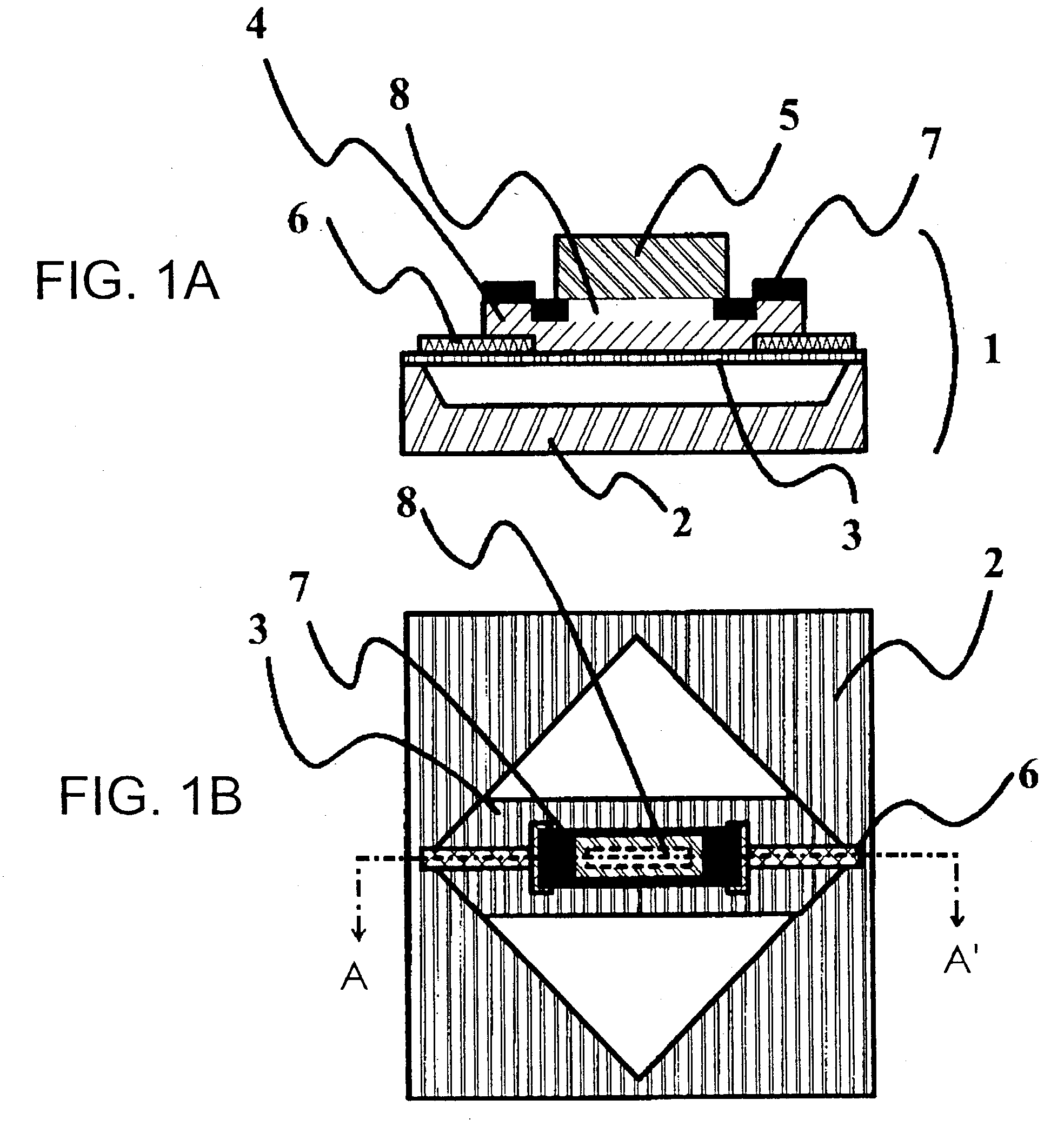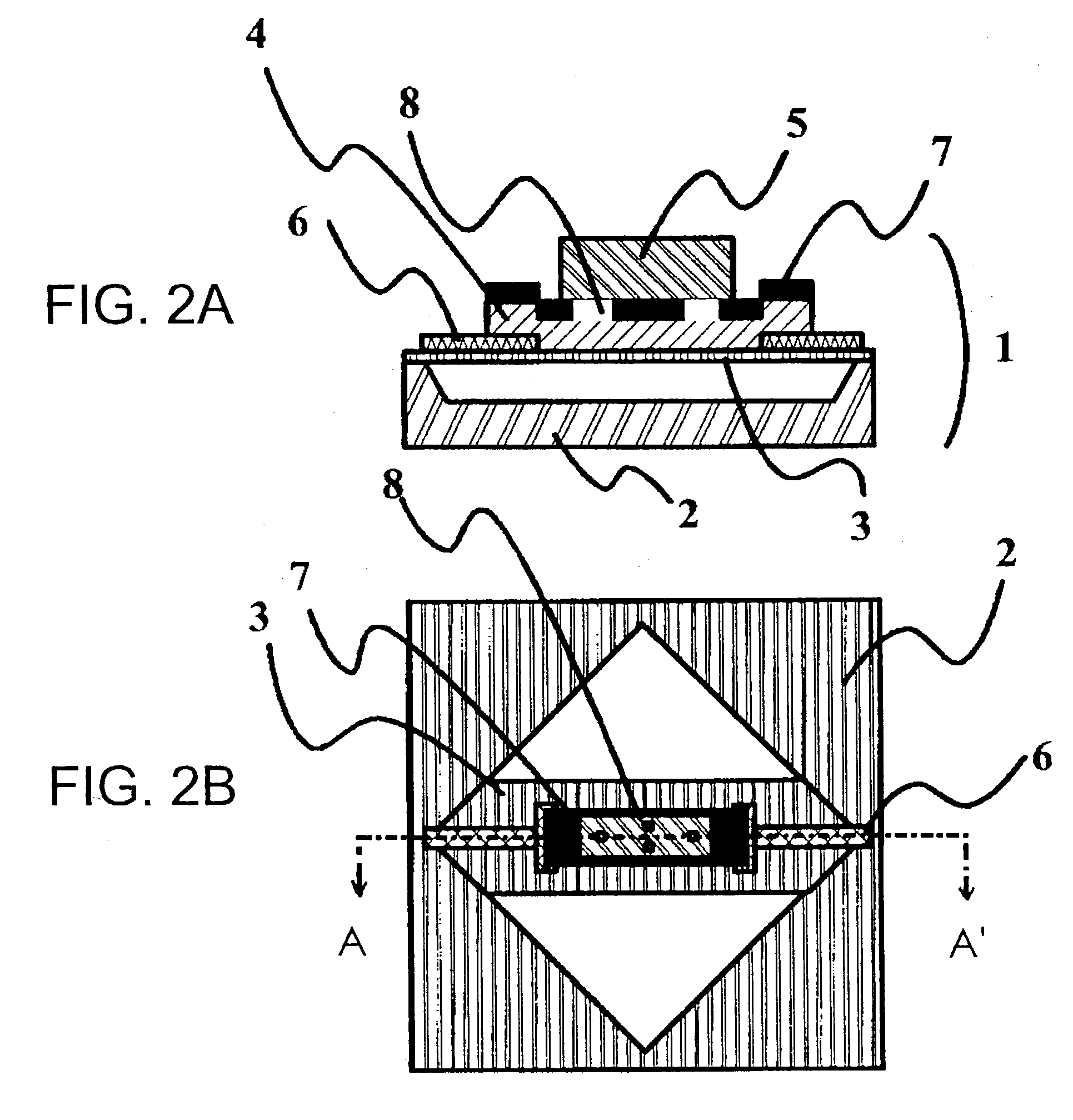Calorimeter
a radiation detector and calibrator technology, applied in the field of superconducting radiation detectors, can solve the problems of a large transition width, the resistor cannot be smaller than the absorber area, and cannot be below 100 ev
- Summary
- Abstract
- Description
- Claims
- Application Information
AI Technical Summary
Benefits of technology
Problems solved by technology
Method used
Image
Examples
first embodiment
[0021] First Embodiment
[0022] FIGS. 1A and 1B are schematic diagrams of a calorimeter, according to a first embodiment of the invention, provided with an insulating film 7 between a resistor 4 and an absorber 5. FIG. 1B is a plan view, and FIG. 1A is a cross-sectional view taken along line A-A' of FIG. 1B. The absorber 5 for absorbing X-rays is superimposed on the resistor 4 of which the resistance value is changed by heat generated by the absorber. The resistor 4 is connected to an external current detector through superconducting wires 6. The resistor 4 is superimposed on a membrane 3. The resistor 4 is constituted by a superconductor and a Joule heat generated by a current that is steadily flown in the resistor 4 and a Joule heat generated by the absorber 5 are thermally balanced and transfer in the membrane.
[0023] In the calorimeter 1, the membrane 3 is provided on a board 2, and the resistor 4, the absorber 5, and the superconducting wires 6 are superimposed on the membrane 3. ...
second embodiment
[0028] Second Embodiment
[0029] FIG. 2B is a schematic diagram of a calorimeter, according to a second embodiment of the invention, provided with four holes, where in two of them are arranged parallel to the direction of a current, and the other two are arranged vertically. FIG. 2A is a cross-sectional view taken along line A-A' of FIG. 2B.
[0030] Hot electrons generated in an absorber 5 by absorption of X-rays isotropically diffuse inside the absorber. To raise the temperature of a resistor 4 uniformly, it is required that the hot electrons having diffused in the absorber 5 reach the resistor 4 as quickly as possible and uniformly diffuse in the resistor 4. Two holes out of the four holes 8 are arranged parallel to the current, the other two holes are arranged vertically, and thus the hot electrons can quickly reach inside the resistor 4, no matter where inside the absorber the hot electrons are generated. Since it is electrons that primarily transfer heat in the resistor 4, the elec...
PUM
 Login to View More
Login to View More Abstract
Description
Claims
Application Information
 Login to View More
Login to View More - R&D
- Intellectual Property
- Life Sciences
- Materials
- Tech Scout
- Unparalleled Data Quality
- Higher Quality Content
- 60% Fewer Hallucinations
Browse by: Latest US Patents, China's latest patents, Technical Efficacy Thesaurus, Application Domain, Technology Topic, Popular Technical Reports.
© 2025 PatSnap. All rights reserved.Legal|Privacy policy|Modern Slavery Act Transparency Statement|Sitemap|About US| Contact US: help@patsnap.com



